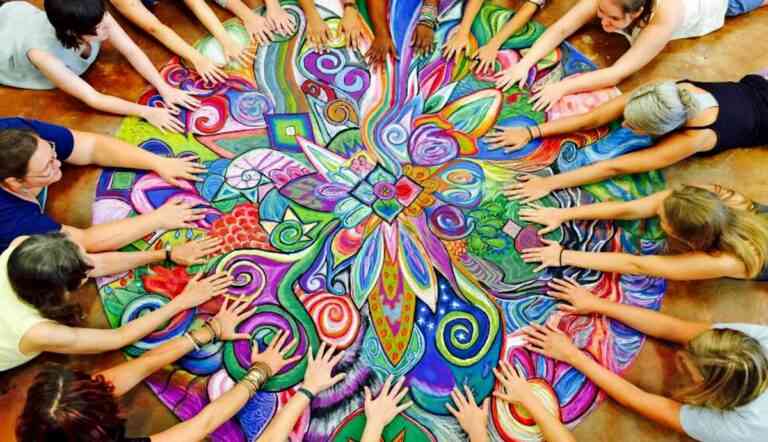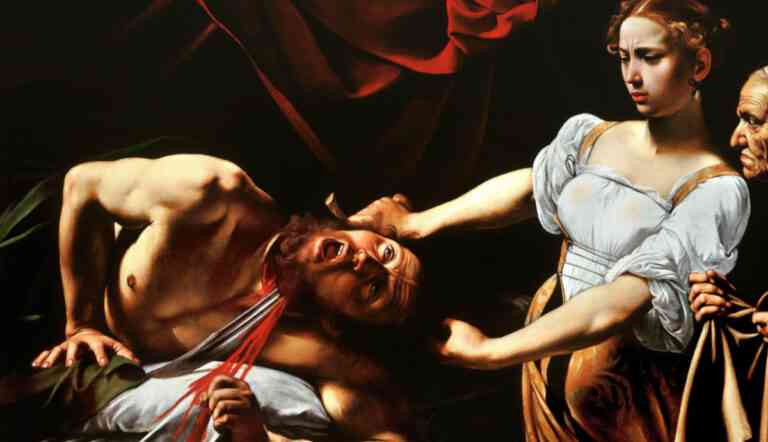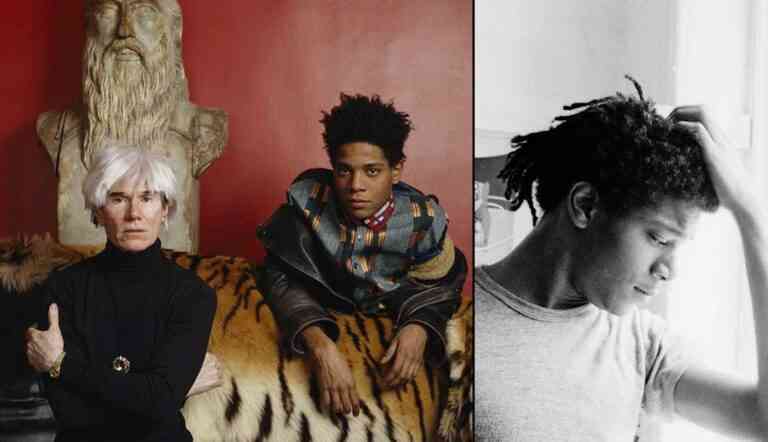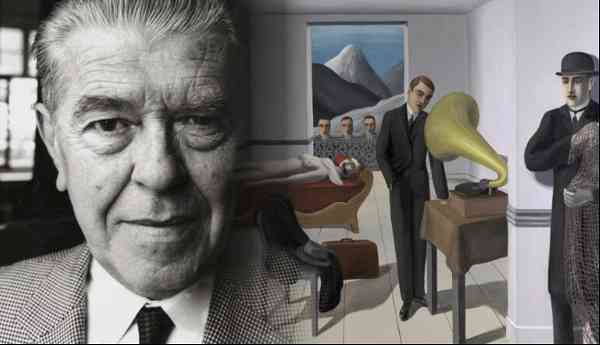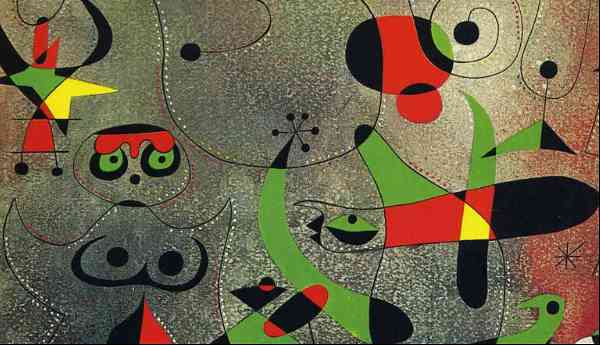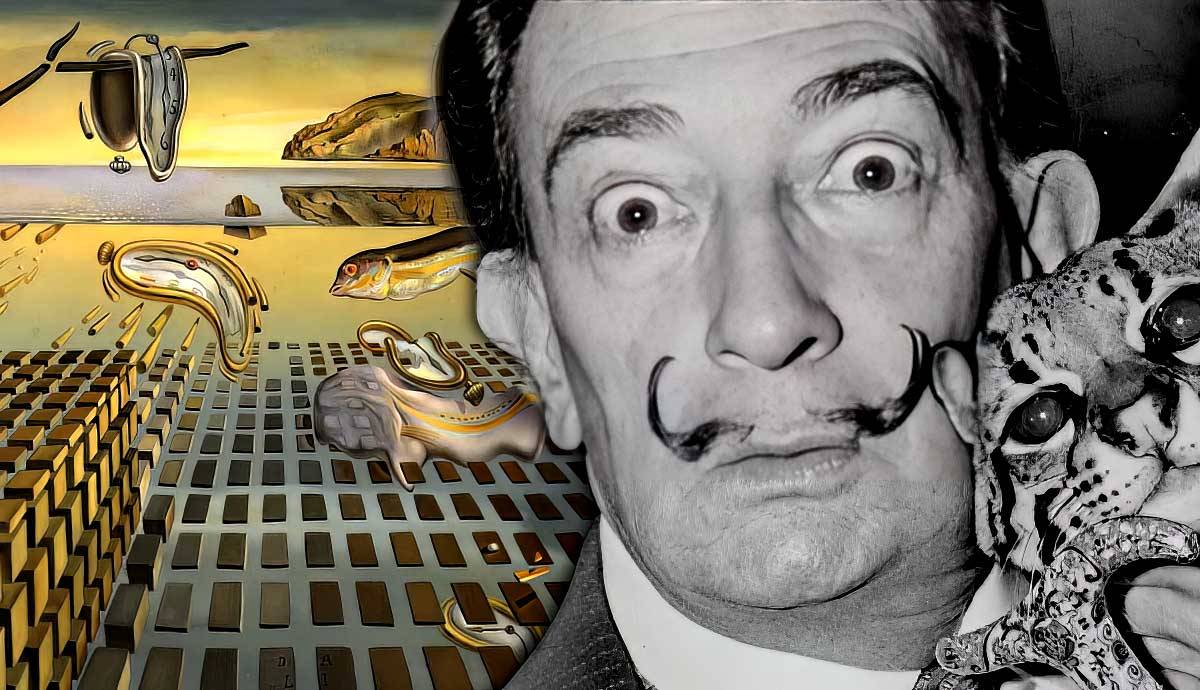
Salvador Felipe Jacinto Dalí I Domenech, known popularly as Salvador Dali, was a Catalan artist celebrated for his surrealist, irrational, and erotic paintings. He was born in 1904 in Figueres, a small village in the north of Catalonia. His family supported his creativity and love for art, and sent him to Madrid to study at the Academy of Arts where he met important artists like Federico García Lorca and Luis Buñuel.
What Are the Main Motifs in Salvador Dalí’s Artworks?
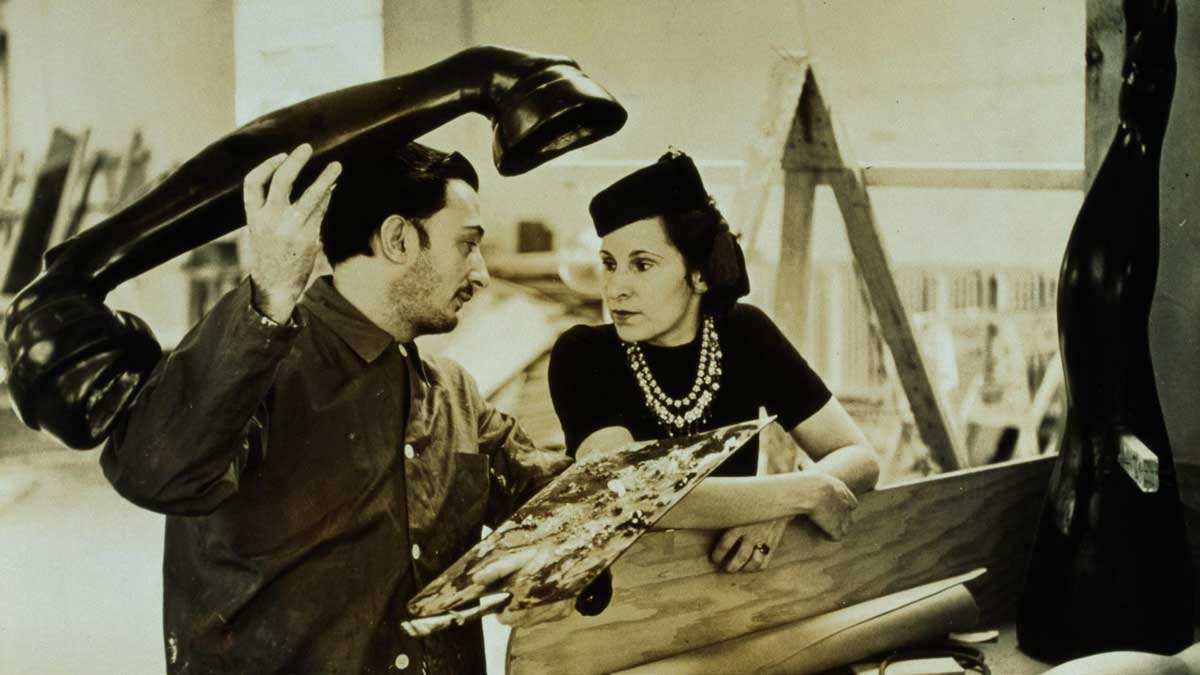
In the 1920s, Dalí moved to Paris from Madrid, where he met painters like René Magritte, Pablo Picasso, and Joan Miró. These artists greatly influenced his art. During his stay in Paris, he also met Gala Eluard whom he married in 1934. Many of his paintings show his love for Gala, who quickly became his muse. Dali became best known as a surrealist painter, but he also worked as a designer, writer, and sculptor.
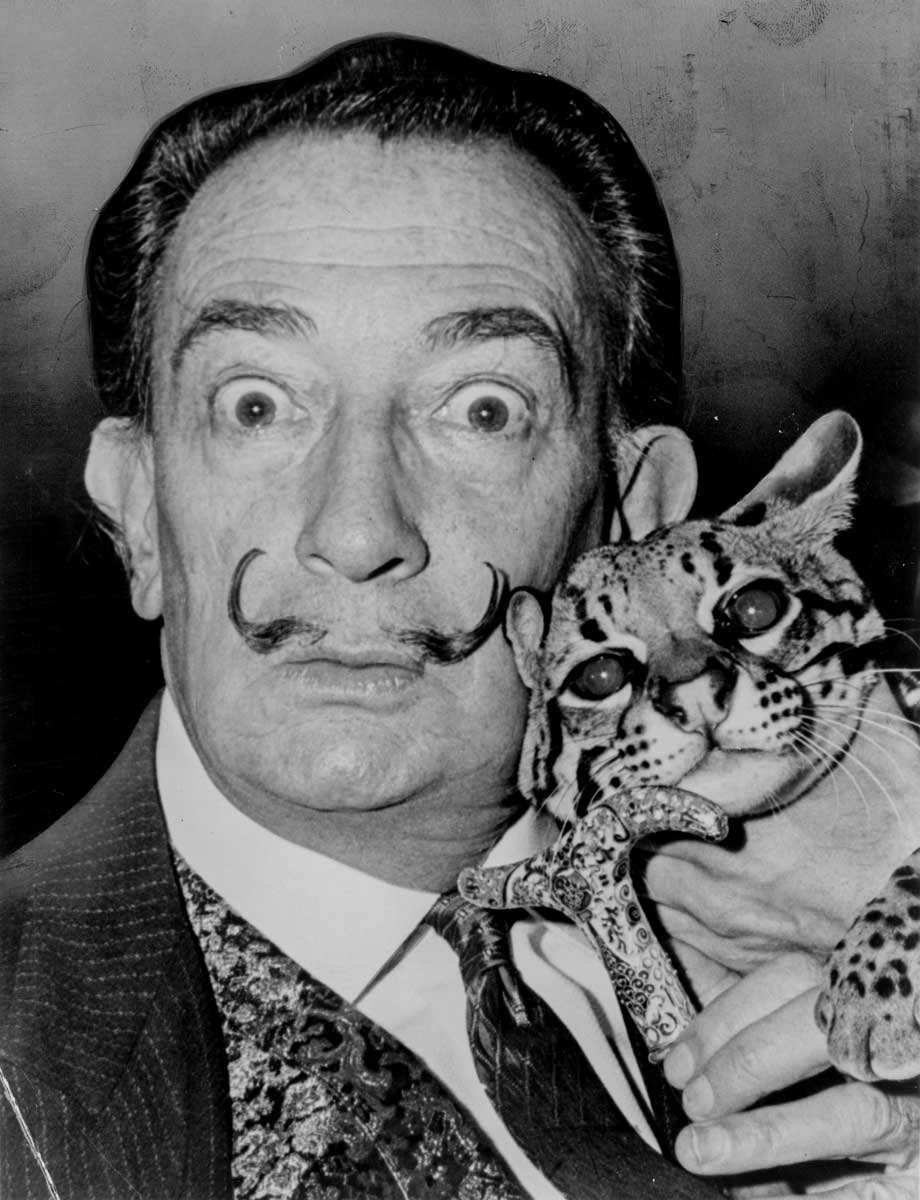
It is difficult to uncover the real personality of Salvador Dalí. He controlled every single text and interview published about him while he was alive and he deeply cared about his public persona. No text could be published without him reviewing it first. He even wrote an autobiography titled The Secret Life of Salvador Dalí in which he shared stories from his life. However, we can never be sure that everything written here was completely true. Some historians believe Dali could have been trying to bolster his artistic persona in order to get more attention.
What we do know is that Dalí had many fears. He was scared of blushing, paternity, women, female sexuality, traveling, aging, death, grasshoppers, and ants. There are numerous obsessive motifs that this painter constantly repeated in his paintings. The main idea of surrealist art was to explore the unconscious mind–Dali often explored his fears. One could go on forever looking for every obsessive and fetishistic motif in the work of the painter. Let’s take a look at some of them.
Get the latest articles delivered to your inbox
Sign up to our Free Weekly Newsletter
1. Ants
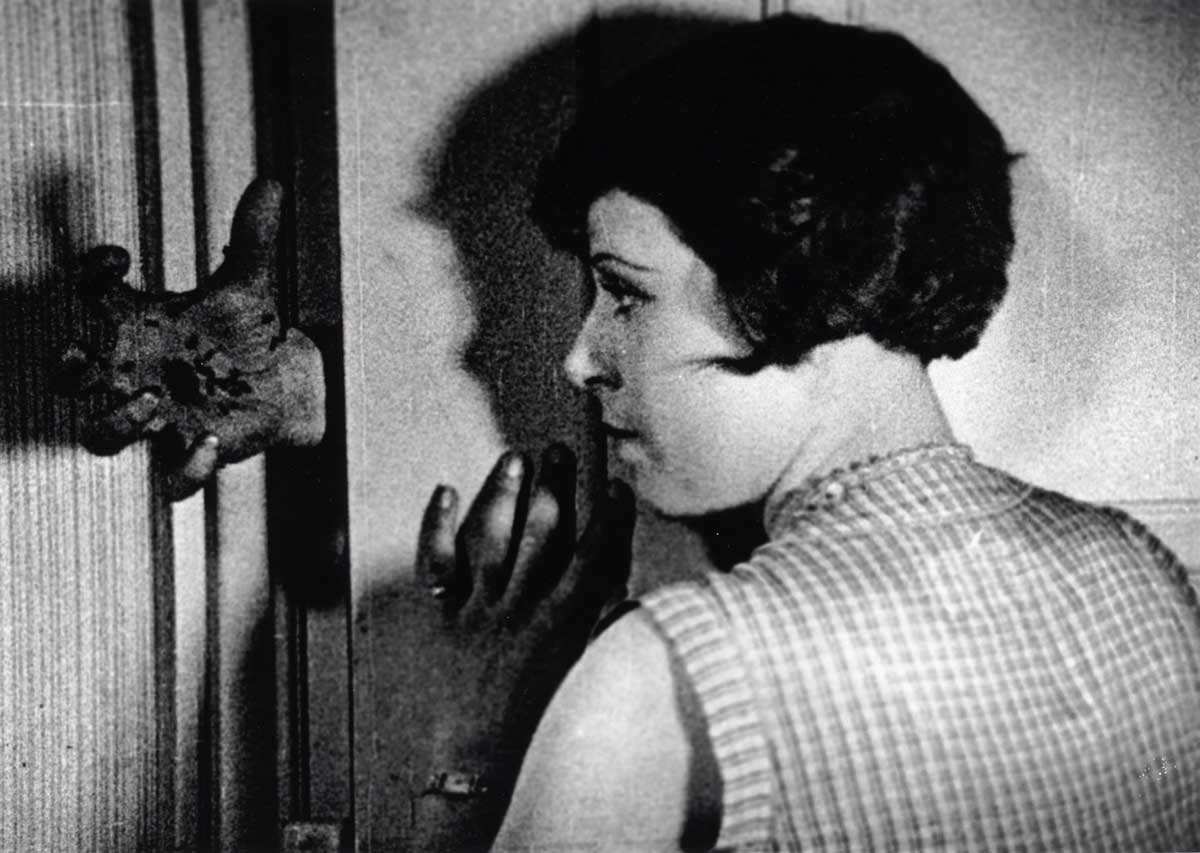
Ants are one of the common elements seen in Dalí’s paintings. When the artist was five years old, he saw a dead insect being eaten by a bunch of ants. From that moment on, ants allegedly became constantly present in his thoughts. In Dalí’s works, ants represent death and decay. They serve as a reminder of human mortality and the ubiquitous transience. Ants also appear in the film Un chien andalou (1929) which Dalí made together with Luis Buñuel. In a well-known scene from the film, ants swarm up from one man’s sleeve, flooding his hand.

Ants appear in one of Dali’s most famous paintings called The Persistence of Memory. In the center of the work, we can see a deformed head with a melting clock on the top. Distorted heads and melting clocks are also frequently featured in his works.
2. Distorted Heads
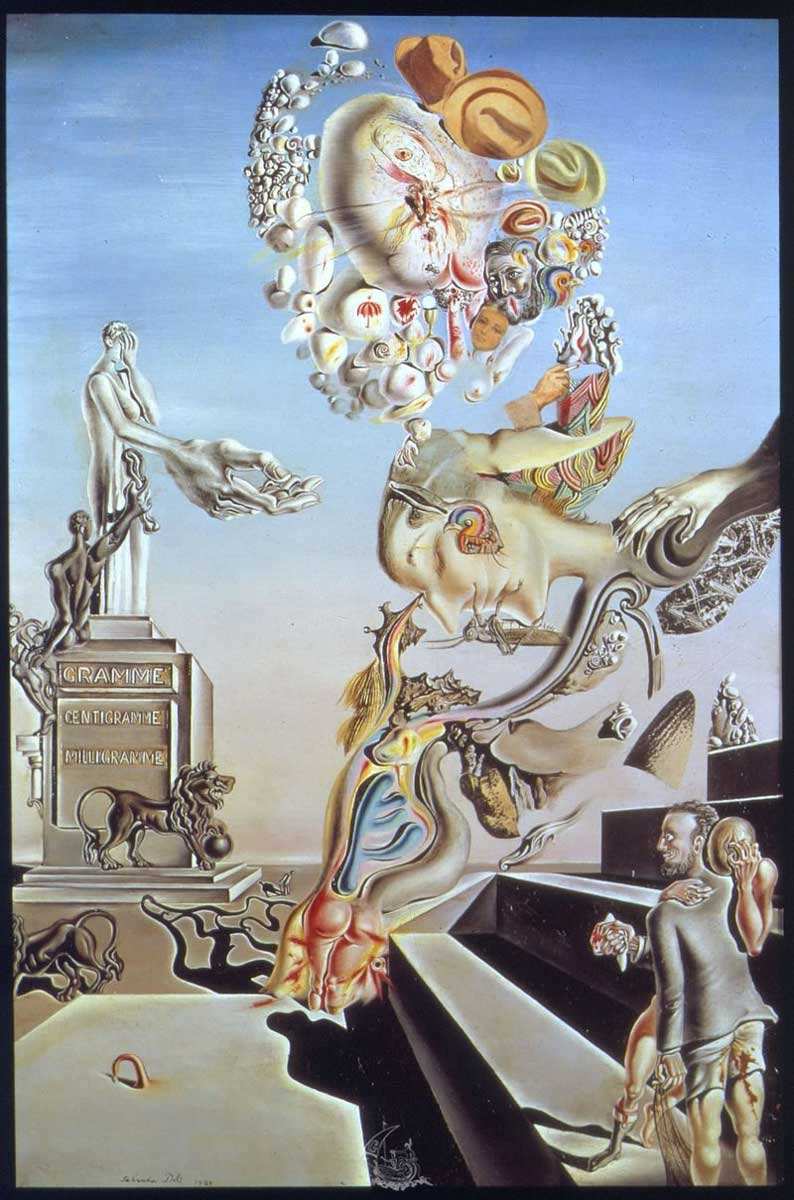
The next obsessive motif seen in Dali’s paintings is the large deformed head. His painting The Lugubrious Game, which Dalí painted in Cadaqués during the preparation phase for his first solo exhibition in Paris, features a deformed head. On the right we see a head shown in profile which could be a portrait of the artist himself. It looks like he is sleeping. In his mouth, there is a grasshopper, a creature of which he was irrationally scared. The painting shows the artist’s sexual fears and insecurities.
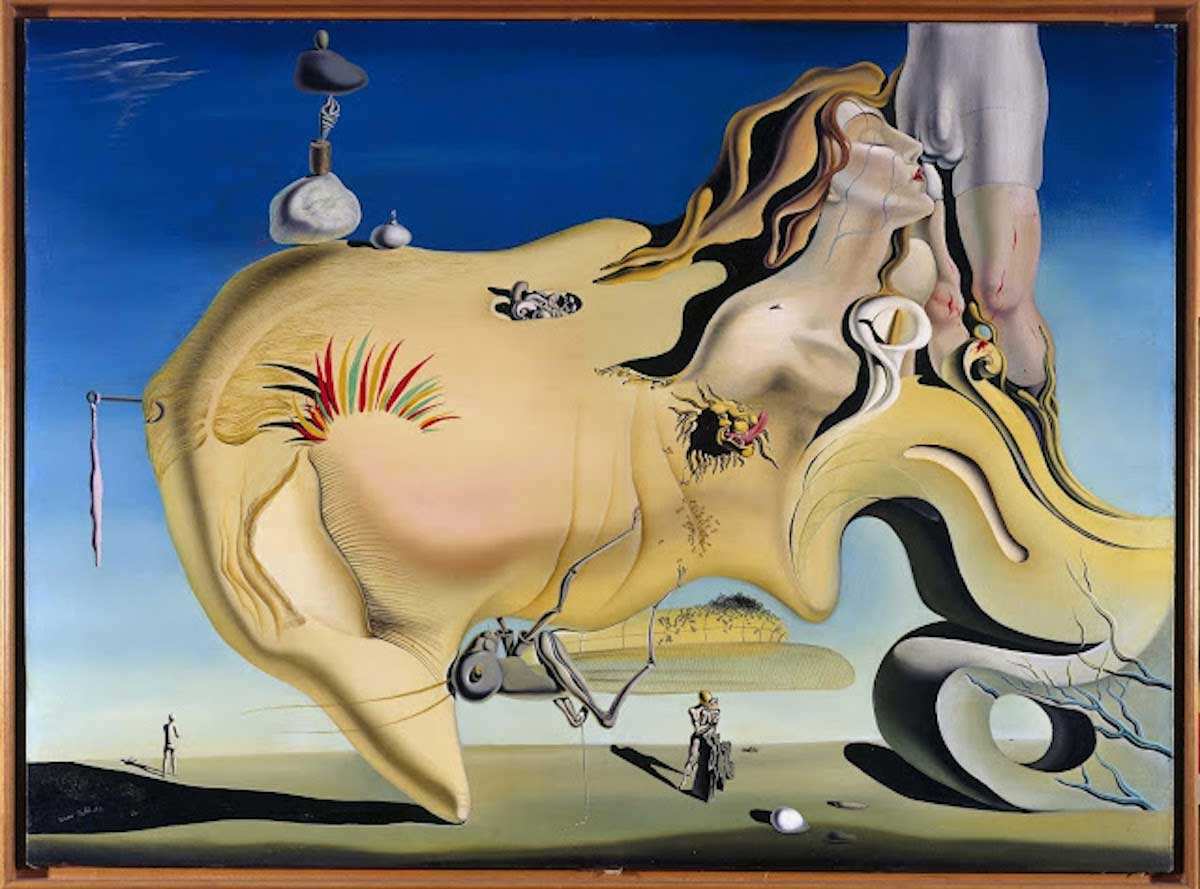
The Great Masturbator was painted in 1929 when Dalí was only 25. Here we see a deformed head shown in profile, as a kind of artist’s self-portrait in the center. A big grasshopper is seen sucking the artist’s head while ants are shown crawling on his cheek. We also see male and female figures emerging from the head, referencing a sexual scene.
There is one more self-portrait of Dalí in this painting, noticeable in the form of a small figure making love to a rock in the shape of a woman. The Great Masturbator represents the transformation that the artist had gone through when he met Gala, the woman of his dreams who saved him from his fears. In this painting, the Spanish artist expressed his anxieties, fears, fantasies, and obsessions. The head in the form of a rock, as pictured here, is one of the motifs that will reappear in Dalí’s work.
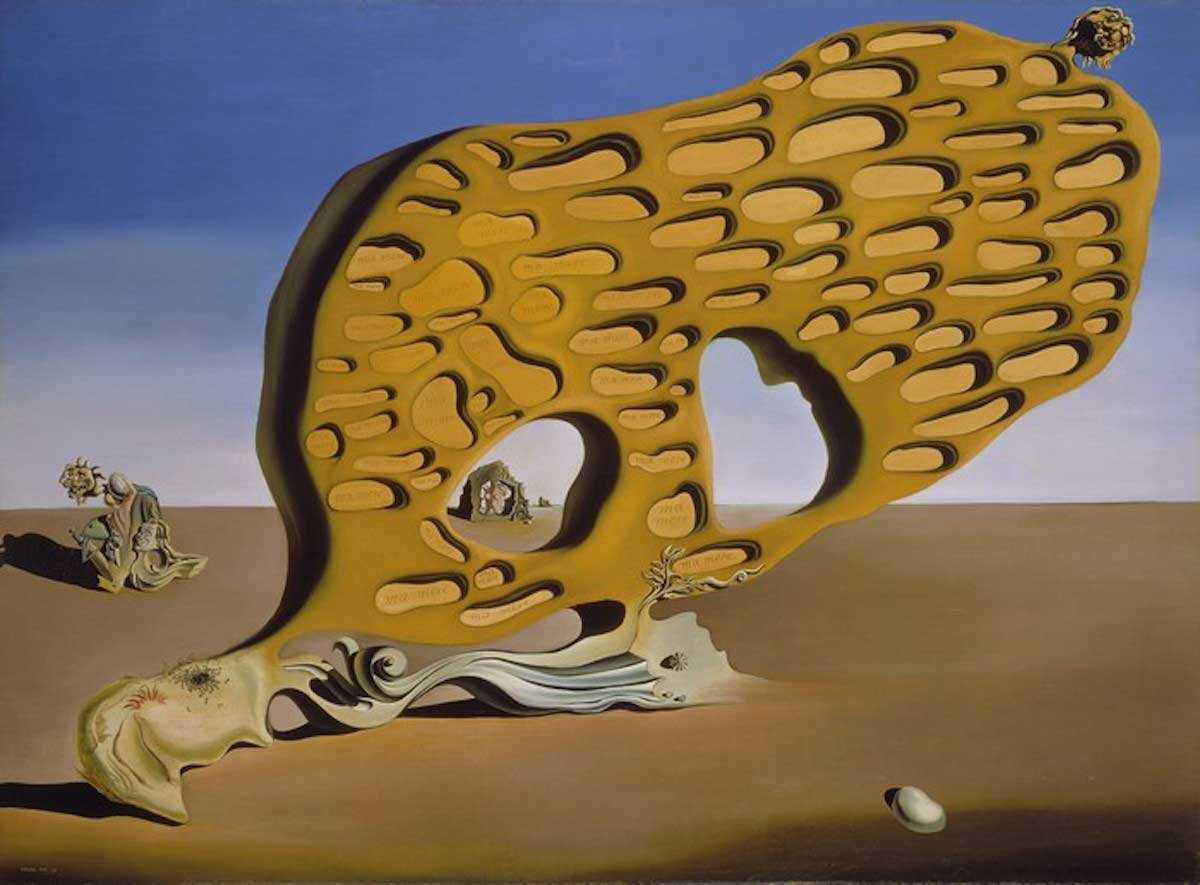
Dalí painted one more painting with the same motif in the same year as the previous two called The Enigma of Desire: My Mother, My Mother, My Mother. The deformed head that is shown sleeping and dreaming in this painting again represents the painter’s self-portrait. Some art historians believe that Dalí was inspired to paint heads of this shape by looking at the rocks on the coast of Cadaqués.
However, the head shown in this painting is somewhat different from the previous ones. It is small, subtle, and full of compartments. Ants and grasshoppers appear in this work as well.
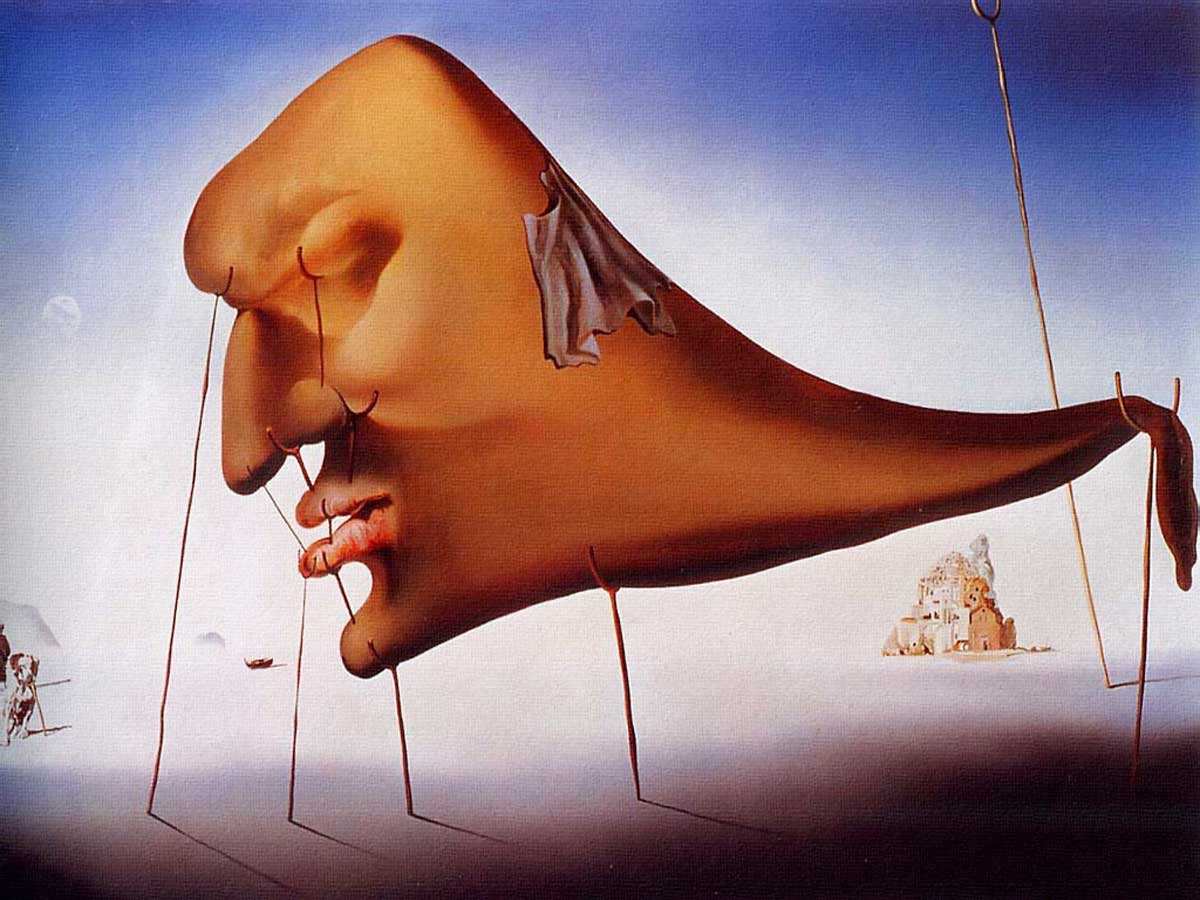
The deformed head is also presented in a work called The Persistence of Memory. This motif was mostly used by Dalí around 1930, after which he stopped painting it for a while. Around seven years later he started focusing on it again. In the painting titled Sleep the head is not a representation of himself, but a personification of a dream. Crutches support the sleeping head, referencing people’s worries in their dreams. Everything looks unstable in this work. Even the dog shown in the background needs support. The bluish light that fills the entire surface of the image also contributes to the surreal atmosphere of the work.
3. Melting Clocks

Melting clocks are a motif that is often seen in Dali’s paintings. From 1952 until 1954, Dalí worked on a painting called The Disintegration of Persistence of Memory. Here, the clocks are shown completely falling apart, while the rest of the world shown in the painting breaks down into geometric blocks. The deformed head is now barely noticeable next to everything else that’s going on in this picture.
4. Female Figures Shown From Behind
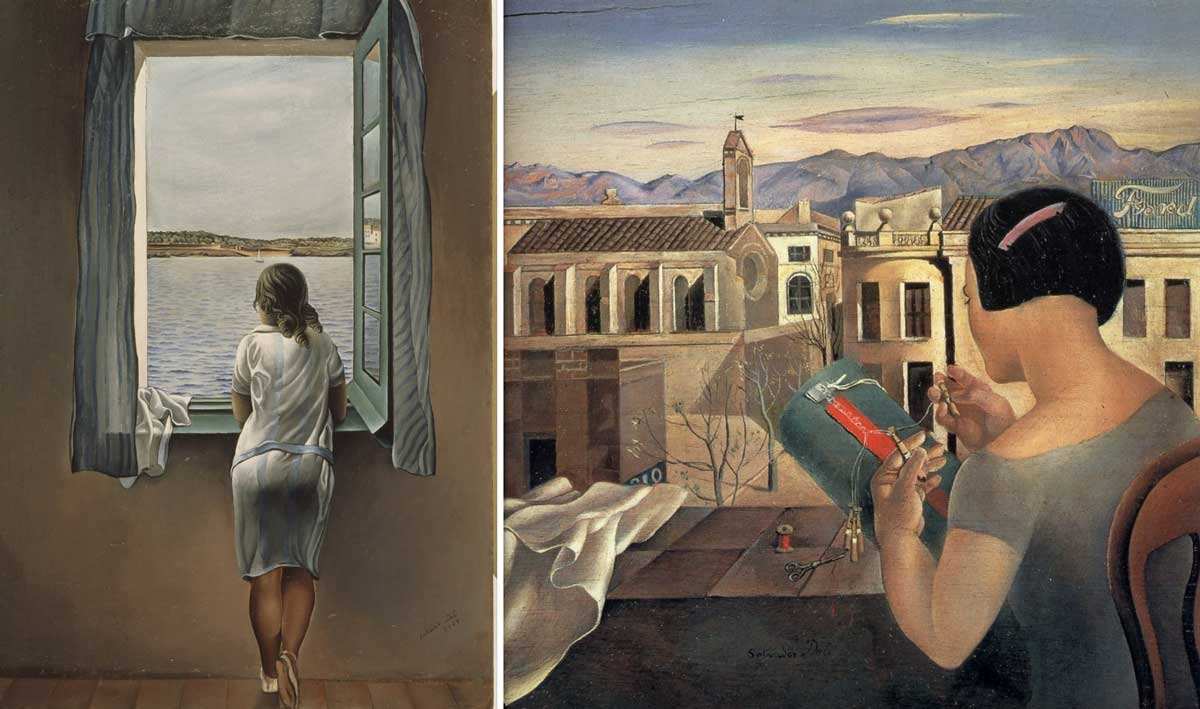
Dalí constantly depicted female figures from behind. One of the first paintings with this motif is known as the Figure at the Window. Around 1925, Dalí painted numerous works featuring this motif. In Woman at the Window in Figueres we see a charming woman sitting at the window while knitting. She is pictured in Figueres, Dali’s birthplace.

In a painting called Girl from Ampurdan, the artist emphasized the buttocks and the hips of an unknown woman. After 1929, this feminine motif still appeared in Dali’s paintings, but with Gala in the leading role.

Portrait of Gala represents Dalí’s beloved wife and muse. Behind her head we see Millet’s painting Angelus. Dalí always painted Gala as a young woman. Another work featuring his muse, titled Gala Nude from Behind, is often compared to Ingres’s La Baigneuse de Valpinçon.
5. Salvador Dalí’s Telephones
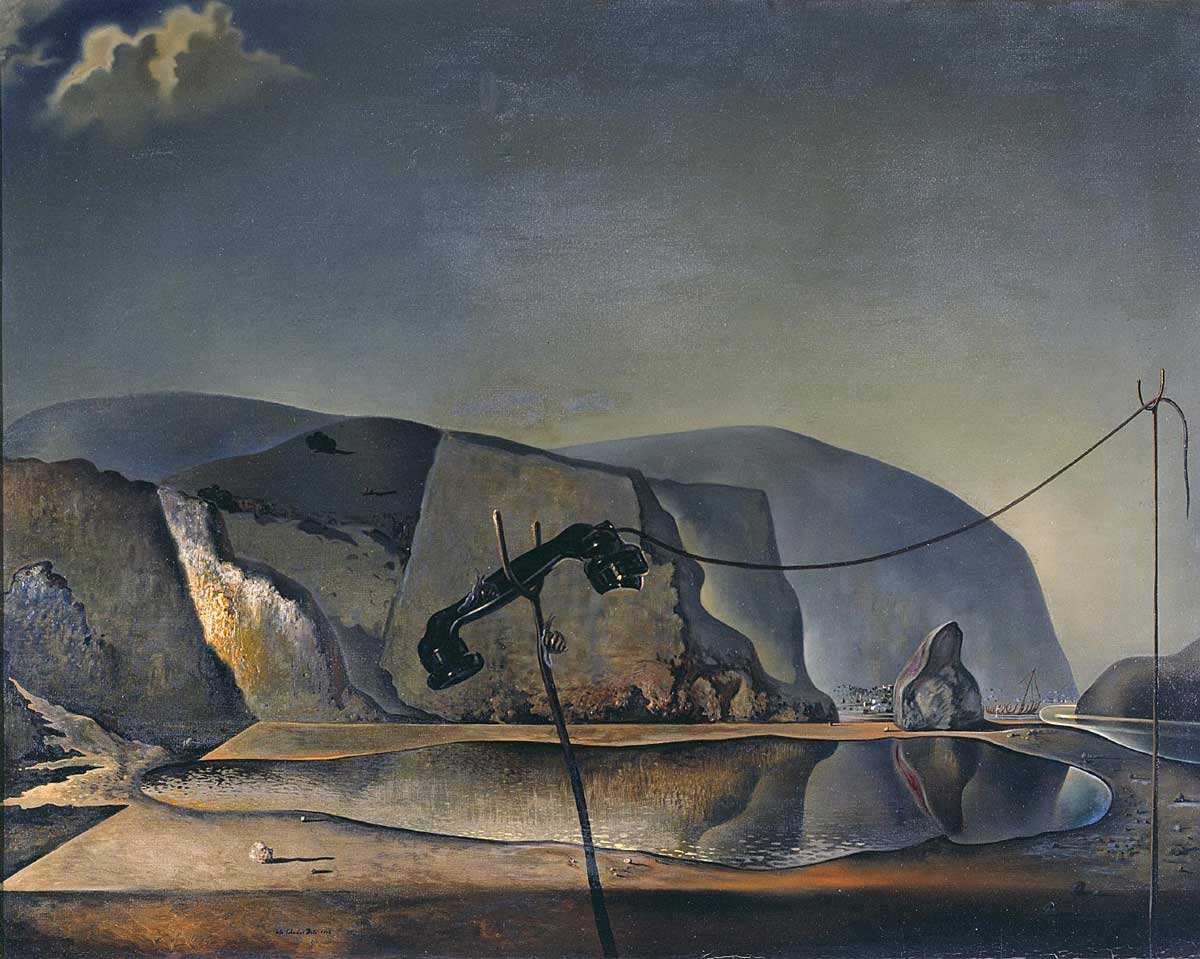
When Dali was young, telephones were a relatively new invention that only a few had the opportunity to use. Dalí said that the subject of his painting Mountain Lake was a conversation between British Prime Minister Neville Chamberlain and Adolf Hitler. The phone shown here is supported by crutches which could represent the instability of the telephone connection. The broken telephone line also contributes to these feelings of instability.
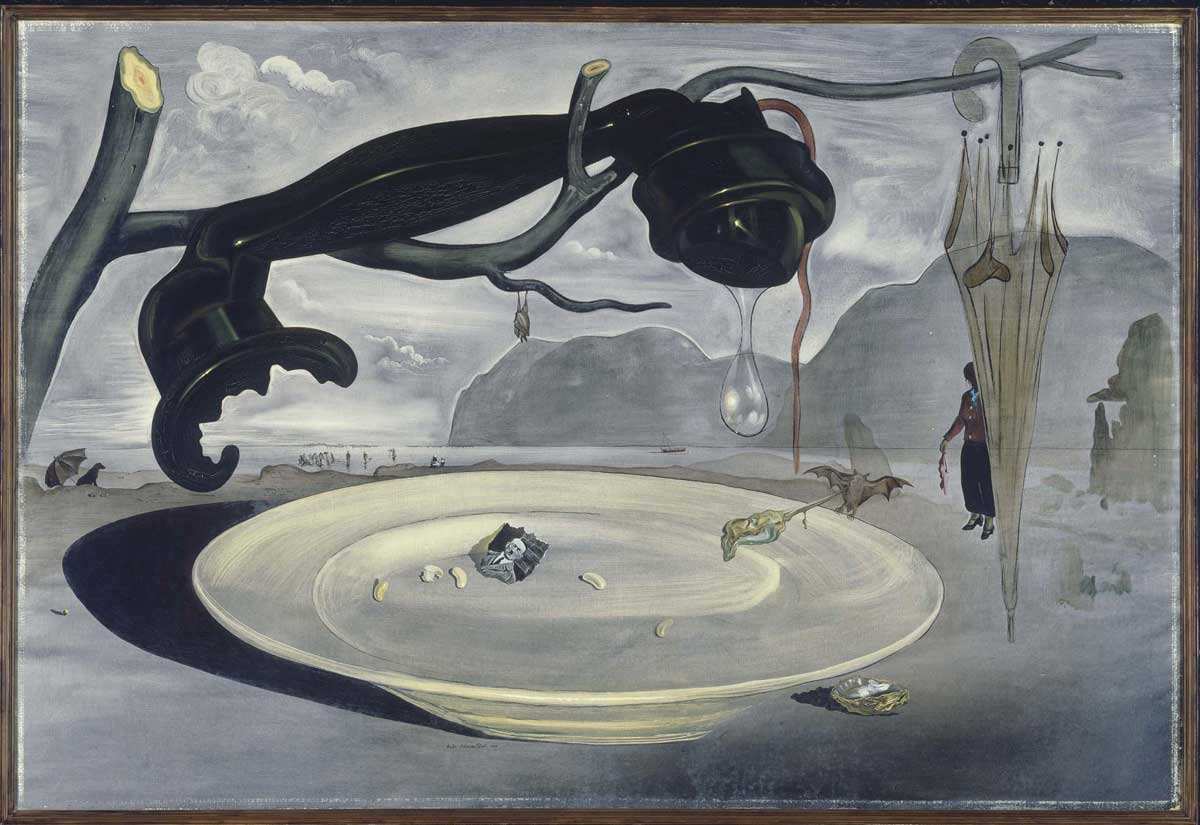
A year later Dalí made another controversial painting titled The Enigma of Hitler. The telephone shown here once again represents the bearer of news. It is placed above a plate, symbolizing the fear and anticipation that was present at that time.

In 1936, Dalí designed the famous Lobster Telephone. Lobsters were another animal frequently seen in Dali’s art. For the artist, lobsters represented something erotic and sensual.

